7 Medical Benefits Of Marijuana


7 Medical Benefits Of Marijuana
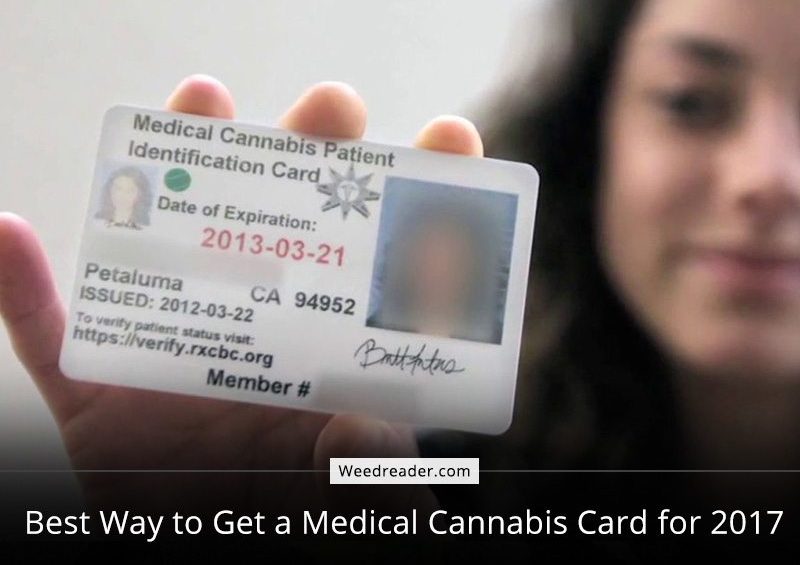
One of the most common questions I get is, “Is it difficult to get a medical cannabis card?” I always respond, “Not as difficult as you might think.” There are all sorts of ways of getting one, but we shall mention the obvious (and perhaps easiest) one first …
Telehealth
Getting to a doctor that specializes in medical marijuana can be tough. Not everyone lives near one, and even if they do, a patient might go there and find out it’s too busy or they’re unable to book an appointment at a time they’d like. Plus, some of these doctors aren’t necessarily in the safest neighborhoods, which is sad but unfortunately true in some instances.
Telehealth saves a person from all this hassle. You can literally:
Telehealth is a massive plus for sick and disabled patients who might have difficulty getting around, as well as those living out in the boondocks.
Should you be worried about privacy and security, don’t worry. Any decent, reputable doctor will have a safe and secure website, with all of your personal information kept private in accordance to the Health Insurance Portability and Accountability Act (HIPAA). Law Enforcement can access these records, but only by court order. This information cannot be given out to police departments willy-nilly.
The Direct Way
You can call me, Doctor Frank, on +1 888-351-7807 and set up an appointment over the phone. My practice address is 4110 1/2 Verdugo Rd, Los Angeles, CA 90065, USA, which you can come to once you’ve booked your appointment (no stalking, please!). I can help walk you through the process. However, whilst I do try and make time for all my patients, many find seeing me online to be just as quick and efficient, and you needn’t leave the comfort of your living room.
Of course there are other Doctors out there and speaking to a friend or family member who uses MMJ might be able to advise you. Regardless of what route you take please make sure they are HIPPA compliant!
What Conditions Usually Get Medical Cannabis Recommendations?
Usually cancer, chronic pain, epilepsy, PTSD, AIDS/HIV, diabetes, multiple sclerosis (MS), Parkinson’s disease (PD), Alzheimer’s disease and any chronic condition that may impact a person’s life over the long-term.
I Want One Now! What Do I Need to Get a MMJ Card?
Now that you know you want a medical cannabis card, all you need are the following things:
Will My Insurance Cover Medical Marijuana?
Whilst there are often vast differences in policy from one insurance company to the next, it is unlikely that most insurance companies will cover medical marijuana, especially as it’s a Schedule I drug. Unfortunately, using medical marijuana may put your insurance at jeopardy in some instances (especially if it’s health insurance paid for by an employer), so be careful and read all your terms and conditions on your health policy properly.
As you can see, getting a medical marijuana card is a lot simpler than you might think. There’s no secret club. No special handshake. No magic words. It’s just a matter of is getting on the phone or computer and booking your appointment. If you have any questions don’t hesitate to get in touch.

A few exciting changes made by Washington with Senate Bill 5131 will go into effect July 2017. And some of those changes could surprise you. For instance, it is now legal to share a bowl. Medical marijuana card-holders are now allowed to buy seeds and clones directly from producers. And, the state is now required to investigate the possibility for recreational consumers to grow weed from home.
Washington cultivators are also moving toward organic standards. In addition, dispensaries will have limited advertising. This is an effort to minimize the appeal of weed to youths. Dispensary owners are also getting a present. owners can now open 5 locations, the old limit was 3.
Washington kept their strict no public advertising rules. The people don’t want businesses to market weed that would appeal to children. Meaning no putting pot advertisements on toys and movie cartoons, no advertising cannabis out of state, or work at a dispensary before turning 21. And business owners who don’t open shop after two years of gaining a license will forfeit their permit.
In 2012, weed was legalized but no one could share a bowl, not even a single leaf. Now, anyone 21 years or older can gift to another adult 21 years and older cannabis. Up to a ½ oz. of flower, 8 oz. of solid edible, 36 oz. of infused liquid, or 3 ½ gm of concentrate. If the exchange is happening in public, then the products must remain in their original store packaging.
Before, cultivators could only sell seeds and clones to dispensaries. Now, patients can buy their seeds and clones from cultivators. This new change in the bill gives leeway to medical marijuana patients who prefer to grow their own plants from seeds.
The state liquor and cannabis board must conduct a study for recreational plant production. They must report their findings by Dec. 1, 2017. Until then, home growing is considered taboo.
Currently, cultivators are not allowed to use the word ‘organic’ when it comes to describing their cannabis products. However, the new bill suggests that cultivators attempt to match to the extent practicable to the Federal Department of Agriculture’s Nation Organic Program.
There is an advisory board being assembled to help draft the rules and regulations needed to comply with the FDA labeling.Anyone who wishes to take part in the advisory board should contact the WSDA Organic Program at organic@agr.wa.gov for consideration.
When it comes to advertising rights, it’s about the children. Washington wants to protect children from seeking out weed because it looks cool. They don’t want commercial mascots or cartoons with marijuana related images on them.
Its ok to have billboards with a business name, location and description of business on the sign. But no weed images are allowed on anything including billboards, toys, costumes, or spiny signs. It may be legal everywhere in Washington but that doesn’t mean they want it marketed everywhere.
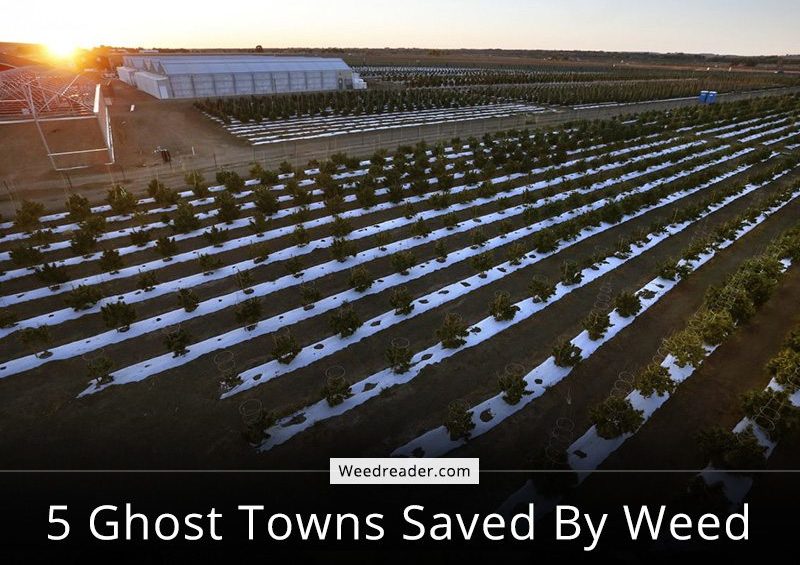
The marijuana industry brought in about $4 billion in sales in 2016. Many companies and communities are benefiting from the economic boom. Even America’s ghost towns are seeing a big boost in funds brought in by legalized weed. Here are 5 ghost towns that seem to be doing the best.
This ghost town of 150 residents has been struggling economically since the early 2000’s. When Sedgwick legalized weed in 2012, people started to travel to Sedgwick from nearby regions. And now, buildings that were falling down are starting to be renovated. New street signs and equipment are being installed. They even opened a 420 friendly bed and breakfast where there used to be a former bank.
Adelanto was a broken town. About 40% of the population lived in poverty, and nobody stayed in town for long. In 2014, the town was in debt by $2.4 million. But when weed became legalized, a huge industrial marijuana farm opened. The new weed farm brought in millions of dollars in tax revenue into the town. And in turn it created more grow facilities, more work for people without college degrees, and new housing.
Pueblo County has a population of 161,000 and they’ve been struggling ever since their steel industry collapsed. The local employment rate was at 7.2%, the highest unemployment in Colorado. However, ever since weed became legalized, people have started moving back and getting busy.
When the first dispensaries opened in 2014, there was nothing. Soon cultivation facilities, product manufacturers and over 100 retailers moved in and created 1,300 jobs. Pueblo County is now generating over $4 million in annual tax revenue. This income funds their 4H and Future Farmers of America clubs. The funds are also put toward medical marijuana research at Colorado State University Pueblo and even established a scholarship program. The new scholarship sends high school graduates to college and it will become available fall of 2017.
Huntington is a dusty little boarder town in Oregon with a tiny population of 435. Huntington’s struggles began when their cement factory moved away. As a result, residents started looking for employment elsewhere.
Now there is plenty of employment in Huntington. Where there once was a dilapidated grocery store now stands a thriving dispensary. Huntington brought in $100,000 in weed taxes this year. The city hopes to put the money toward repairing streets and hiring full time medical emergency support.
Trinidad is a former mining town with a population of 8,200. The streets were filled with empty stores, and their ancient water pipes were over a century old. Since the legalization, Trinidad is no longer the little abyss of nothingness.
In 2015, the cities tax income from recreational and medicinal sales was $850,000. They began using those funds to repair buildings and old water pipes. Trinidad officials also purchased a new fire engine. By 2016, Trinidad more than doubled their cannabis tax revenue and they are continuing to thrive.
These 5 ghost towns have reversed course thanks to legalizing weed. All of these towns are continuing to thrive and raise themselves above the poverty line. Just imagine how pot revenue is affecting bigger cities and metropolitan areas.
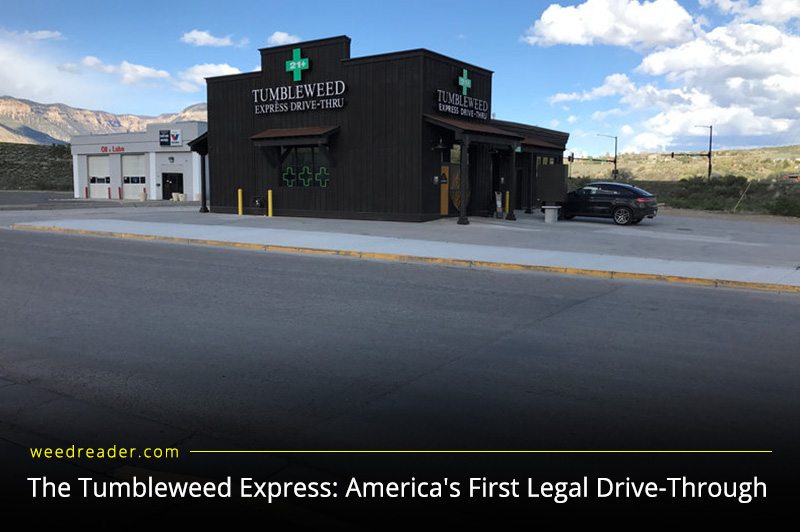
Smith, a 58-year-old business man opened a drive-through weed shop in Parachute, Colorado. He did this because late night customers were constantly knocking on his door. He wondered how he could provide his customers with after business hours weed. That’s when he thought of a drive-through.
Smith bought an old car wash and turned it into the Tumbleweed Express. Which became Colorado’s, and the countries, first legal cannabis drive through. Smith happened to open his new drive-through just in time for April 20th, a popular stoner holiday. On April 20th, he held a grand opening with live music, food and drinks. Smith’s business was buzzing with attention.
Smith thought he would face resistance to the idea of opening a cannabis drive-through. Especially since the town banned all marijuana establishments right after it became legalized. But after 2015, the small town of 1,100 people lifted the ban. This gave Smith the small window of opportunity he needed to attempt to open the cannabis drive-through.
Parachute Town Manager, Stuart McArthur, thought the cannabis drive-through was a great idea. It provides a unique attraction, and its location is in a perfect spot. The Tumbleweed Express is placed near fast food, a gas station and a liquor store.
Smith said that the town was surprisingly supportive. He expected lots of backlash from his community. But they have all surprised him. “The stars were in alignment. A lot of things lined up,” he said.
The town manager did warn Smith that he must comply with all the state’s dispensary regulations. For example, no persons under 21 can purchase weed or is allowed in dispensaries. Even if underage customers are just sitting in the backseat of the car, they are not allowed in a cannabis drive-through. Also, no marijuana can be visible from outside the property, even in drive-through. To do this he had to install security and surveillance footage that prove no weed is visible from the streets. Smith has complied with all of Colorado’s dispensary regulations and more.
For those who are curious and want to visit The Tumbleweed Express, the store hours are Thursday through Sunday from 4pm to midnight. The hours seem strange, but Smith’s goal for The Tumbleweed Express was to provide weed to customers during after business hours. In other words, he is open for business during normal club hours.
Smith used to be a pawn shop owner. He owned 23 pawn shop business’. But he gladly sold them all to the national pawnshop chain called EZ Pawn.
The money Smith received from selling all his pawn shops gave him the revenue he needed to open The Tumbleweed Express. But Smith hasn’t stopped there, he opened more pot shops. Smith opened weed shops in Edwards, Eagle-Vail and Frisco Colorado.
The current popularity of the Tumbleweed Express shows there is a demand for convenience, even in small towns. Do you think a marijuana drive through would work in your town? Let us know in the comments below.

For those who can’t simply stop taking dangerous drugs, harm reduction is the next step. Harm reduction is the process of treating drug addiction problems by helping patients slowly limit their drug intake. Scientists are researching the use of marijuana as a possible harm reduction treatment.
Joe Schrank is an American program director and the founder of High Sobriety. He uses marijuana as a detox method for his patients who are struggling with severe drug addiction. Schrank says that some patients want to wean themselves off drugs. And cannabis provides the less invasive means of maintaining sobriety.
Joe says he’s been criticized for using weed as a detox cure. “Some say it’s hypocritical because, you know, you’re supposed to go to rehab to get off drugs.” Joe reply’s to criticisms with his own personal experiences. He’s been free from drug abuse for over 25 years by using weed to help him become abstinent.
CEO, Todd Stumbo, of Blue Ridge Mountain Recovery Center in Georgia disagrees with Shrank’s methods. Stumbo argues that there is currently abstinence based methods that are proven to help patients with their drug addiction problems. That there is simply not enough evidence to support Shrank’s methods using cannabis.
Dr. Nora Volkow is the director of the National Institute on Drug Abuse. Dr. Nora agrees that there is currently not enough evidence to support marijuana as an effective tool in harm reduction. She also states that there is no evidence-based medication that has been effective in the treatment of cocaine addiction.
Dr. Nora is saying, “In principle, what we have aimed for many years is to find interventions that would lead to complete abstinence.” And, “we currently have no medicine to intervene, and it [cocaine] can be a very severe addiction and actually quite dangerous.”
Yasmin Hurd is the director of the Addiction Institute at Mount Sinai School of Medicine. Yasmin found that cannabinoids like THC and CBD reverse some of the brain changes that occur with heroin use. She also discovered that CBD positively influences the body’s biological systems. Systems that are linked to negative components of addiction such as anxiety and inhibitory control.
M-J Milloy is the infectious disease epidemiologist and research scientist at the BC Center for Excellence in HIV/AIDS. His studies also found that crack addicts benefited from marijuana. They started weaning themselves from crack which showed significant positive results.
Another study found that cannabinoids effectively reduces cravings and anxiety among heroin addicts. “[Weed] can really help people with pain management and other health issues, or it can help them be safer,” Schrank said. While not concrete, this supports the effectiveness of harm reduction methods and goals.
Abstinence is a difficult thing to accomplish for many drug addicts. In addition to chemical changes and long term damage, which is the case of many pharmaceuticals, recovering addicts face intense social stigma.
Schrank says that people need space to grow and develop themselves. The process of recovery is a lifelong one and cannabis can help with the transition. And we must also remember that most people coming off crack or heroin need to feel that comforting feeling of change. Cannabis may not solve every problem, but it can help other issues seem smaller.
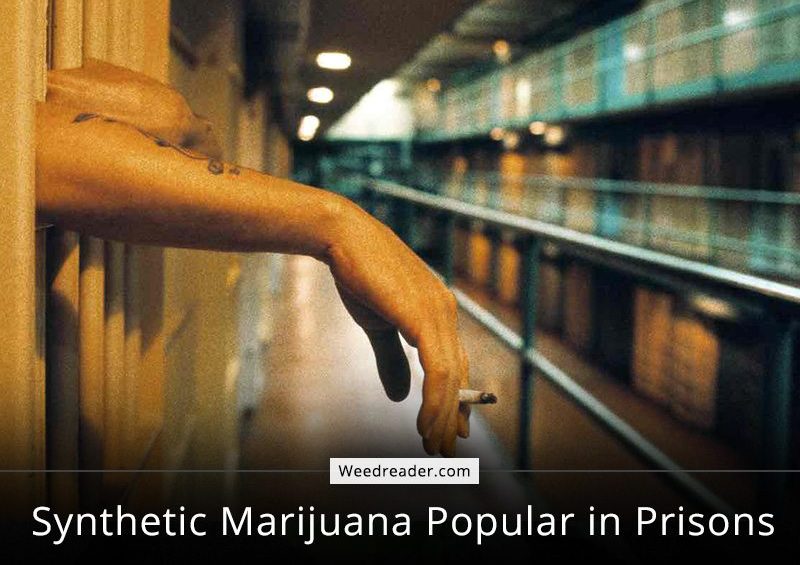
Synthetic marijuana has taken over the prison market for a few big reasons. First, it is easier to smuggle into prisons than most other drugs. Because synthetic marijuana doesn’t show up in tests, inmates find it easier to hide use.
The punishment for those who are caught with synthetic weed is also less severe than getting caught with other drugs. Synthetic weed isn’t all good though.Early results show that consuming synthetic marijuana may pose a health hazard but that hasn’t stopped inmates.
Synthetic Marijuana is easy to smuggle in prisons.
Tiny packs of synthetic marijuana that resemble tea-bags can be purchased under a variety of names. Many names don’t reflect that they are cannabis products. Names like Spice and K2 help inmates fly under the radar with potential contraband.
These little packs are shredded vegetable material coated with THC extracts which can easily be snuck to inmates. Soaking pieces of paper with THC is another popular method of sneaking in marijuana but won’t pass drug screening. The soaked pieces of paper are disguised as letters to inmates, which are rolled up and smoked (or eaten) without alerting guards until a drug test.
Passing random drug tests is another reason to go synthetic.
Another reason inmates prefer to smoke synthetic weed is because it is one of only a few substances that won’t come up in any of their test results. Prison urinalysis drug tests for alcohol, amphetamines, barbiturates, cocaine, codeine, marijuana (THC specifically), methadone, opiates and phencyclidine (PCP). Although marijuana comes up in prison urinalysis drug tests, synthetic marijuana does not.
When prisoners are caught with synthetic marijuana in their possession,they can expect a slap on the wrist and a note on their record. Inmates who are caught with actual weed, alcohol or any other drugs face harsh penalties. Penalties can include losing phone privileges for a year, up to 60 days in segregation, loss of good time. Penalties can even include limiting visitation rights or even halting them for a period.
Synthetic marijuana can be legally purchased by the public in sealed packages that look like standard sized tea-bags. Synthetic weed can also be made without the use of sophisticated lab equipment. Nor does it require you to be a Heisenberg. Basically, anyone can make synthetic weed at home. After all, the most basic synthetic weed is just shredded plant material (paper) coated with THC juice.
Smoking a letter from “Grandpa Purps” is not the healthiest way to get your fix. The unregulated use of synthetic weed is potentially dangerous. People are getting sick from smoking unknown chemicals (like those found in ink) in addition to using unsafe methods of consumption.
The reported side effects of synthetic marijuana include mental agitation, rapid heartbeat, drowsiness, vomiting and confusion. The Center for Disease Control and Prevention (CDC) reported that in several cases, life-threatening and substantial lasting effects were documented. Researchers have also found that synthetic weed increases suicidal thoughts.
Even star athletes have succumbed to the negative side effects of synthetic marijuana. Former NFL player Aaron Hernandez committed suicide while in a state prison. The inmates, guards and autopsy reported that Aaron’s habitual use of synthetic weed caused his suicidal behavior.
The synthetic marijuana in prison crisis is another example of why marijuana needs to become federally legal. Once marijuana is moved from being a schedule I drug, then inmates who can have access to tobacco may also have access to marijuana. Thus not needing to suffer needlessly.
Photograph: Jim Havey / Alamy/Alamy
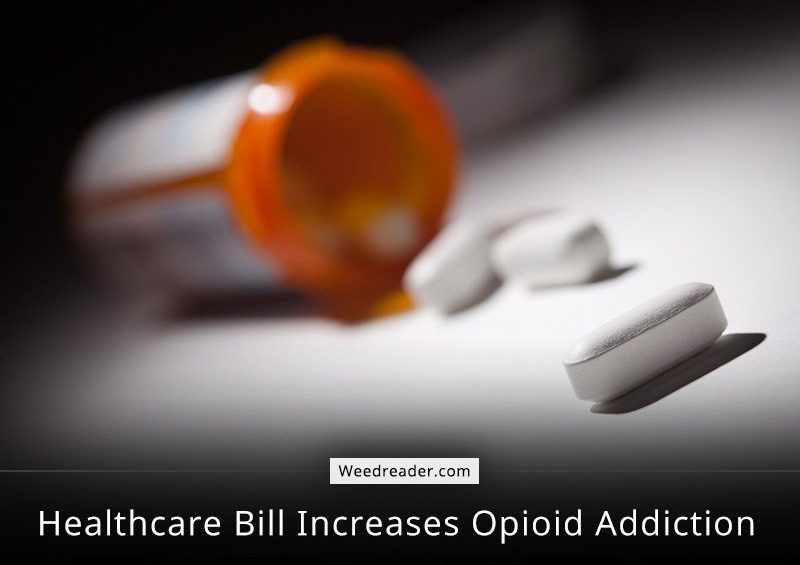
Over reliance on drugs like Vicodin and opioids by physicians has contributed to the groundswell of people struggling to overcome chemical dependence and opioid addiction. One of the emerging treatments uses cannabis in place of harsh or dangerous pharmaceuticals with unknown side effects.
1 in 3 Americans directly affected by the addiction epidemic. The low risk and cost of cannabis compares well to the wildly fluctuating pharmaceutical prices. Mandates around pre-existing conditions and mental health services in the Affordable Care Act helped expand Medicaid and insure millions for the first time in their lives.
Access to many of the essential addiction and mental health services people have come to depend on are getting removed. The 24 million Americans who can afford it the least will be expelled from treatment. Republicans voted to pass the American Health Care Act before they even knew how much it would cost.
After years of chanting ‘repeal and replace’, the Republicans had their chance to present an alternative. Yet they had literally nothing ready. Even when they were voting on the bill, they didn’t even know how much it would cost. But lawmakers were so zealous to pass ANYTHING that they willingly signed a blank check and hoped someone else would clean up the bodies.
According to an NPR interview with President Obama’s director of National Drug Control Policy (NDCP)Michael Botticelli, “I think it’s not hyperbolic to forecast that we’re going to see dramatic increases in mortality associated with drug overdose deaths [if the proposed bill goes into effect],”
It’s not just the NDCP that thinks the republican led healthcare bill will lead to more deadly opioid addiction. The American Society of Addiction Medicine sent a letter (PDF) warning Congress that the Republicans’ American Health Care Act will reduce coverage for vulnerable populations, including those who suffer from addictions.
Most states have medical marijuana laws in place that require a doctor’s recommendation. Many people are only able to obtain their medical marijuana cards because the Affordable Care Act forced insurance companies to include regular checkups. Millions of people on the low end of the economic spectrum could finally obtain the treatment they needed for years. Until the Republican led American Health Care Act was forced through the legislature at least.
The new AHCA doesn’t operate in a vacuum. The Trump budget plan cuts funding for mental health treatment in addition to the changes made in the healthcare bill. At the same time, it provides additional funding to drug enforcement. This will create more deadly clashes between police and the mentally ill. Clearly, the current lawmakers are Disturbed and Drowning Pool fans because they are Down with the Sickness to Let the Bodies hit the Floor. Although I’m pretty sure those bands have done more to promote mental health.
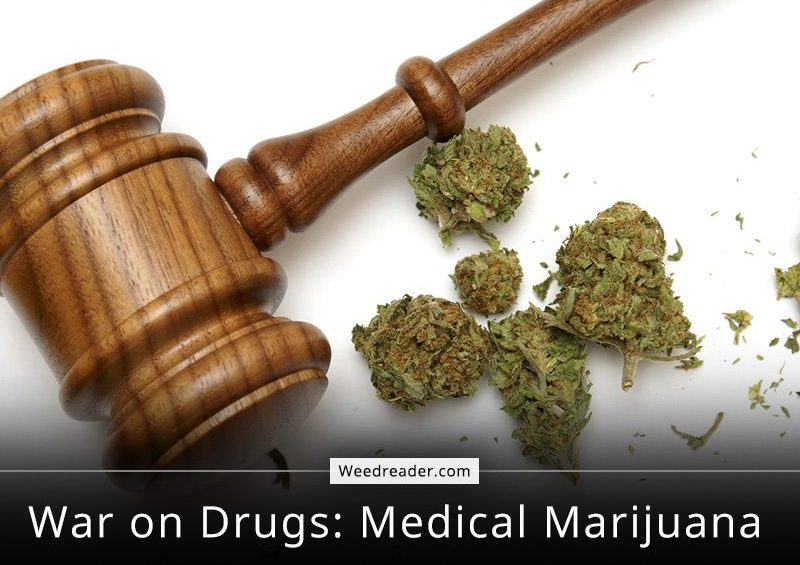
The war on medical marijuana has arisen due to President Trumps latest document, causing uncertainty in the community. Medical marijuana programs exist in 29 U.S. states and have large public support.
White House aides argue that the President’s objections do not cause immediate policy changes. “It just creates a lot of uncertainty, and that uncertainty is deeply concerning for patients and providers,” said Michael Collins, deputy director of the Drug Policy Alliance. The public is concerned because the government insists that although weed is federally illegal, it will not impose strict punishments.
And yet, Attorney General Jeff Sessions recently directed federal prosecutors to pass harsher punishments for drug defendants.
Recreational weed smokers have more to fear from federal intervention. The President says that he sees a big difference between medical marijuana prescribed to patients by doctors and recreational weed.
The provision in question prohibits the Justice Department from spending money that interferes with state medical marijuana programs. “I will treat this provision consistently with my constitutional responsibility to take care that the laws be faithfully executed,” Trump wrote in the signing statement.
Trump has objected on constitutional grounds to a program that helps black colleges and universities get low-cost construction loans.
According to Tom Angell, founder of Marijuana Majority, Trump is essentially saying that he reserves the right to ignore the congressionally approved provision. James Cole, a Deputy Attorney General had prosecutors enforce all federal drug laws, even in places where marijuana is legal. On the other hand, Cole wrote that federal authorities should stay out of states that have regulatory systems in place. Medical marijuana is to be revised again by Congress in the next few months. It seems like the trend is to allow the government to pick and choose who to prosecute for marijuana offenses.

The Tucker Family is charged with 25 child endangerment charges for Cannabis. Erica Tucker didn’t want the harmful pharmaceuticals she was prescribed for her ailments. So she decided to try a holistic medicinal approach: cannabis. Eventually, Erica weaned herself away from all pharmaceuticals and found herself 100% on marijuana.
Erica has five children, including a newborn she breastfeeds. She was told that the man-made pharmaceuticals she used to take were harmful to her children. Mainly because the drugs would transfer to the children through breastfeeding and possibly interfere with their development. So she decided to treat herself with marijuana instead.
Unfortunately, not all treatments (pharmaceutical or all natural) are perfect. Erica had a mal seizure that put her in the ER. And that is when the rug was pulled out from beneath her feet. The Tuckers received numerous child endangerment charges on May 8th, 2017 because of Erica’s cannabis use.
When the doctors found out she was breastfeeding while on marijuana, all five of her children were immediately taken away from her and her husband. The baby (at 22 months) tested positive for marijuana because she was breastfeeding while on cannabis. The children were sent to foster care, but eventually, Erica got her children back. Erica and her husband are facing a host of child endangerment charges. In fact, they received five charges for each child. The public is outraged because this is one more example of how the war on drugs is tearing families apart.
According to societies mores, it would’ve been preferable for Erica to continue taking the harmful pharmaceuticals with terrible side effects. Even though those pharmaceuticals cause more damage to infants than cannabis. If she had opted for the more damaging treatment, her children wouldn’t have been taken away and the Tucker’s wouldn’t be facing child endangerment charges.
Erica choose the less physically harmful approach to her treatment and now the Tucker parents are being treated as horrible parents by their peers. Yet now their family is suffering the consequences of taking the road less traveled. This story is another example on the terrible effects on the war on drugs and the damaging impact it has on normal families looking for healthier alternatives to treatment.